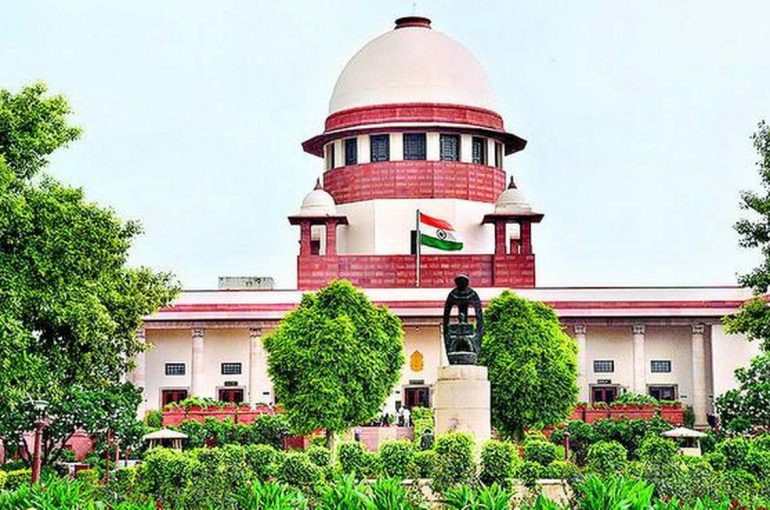SUPREME COURT HOLDS: MERE WEAPON RECOVERY AND FSL REPORT NOT ENOUGH IN ABSENCE OF CORROBORATIVE EVIDENCE
The Supreme Court of India, in a recent decision addressed a challenging question of criminal jurisprudence concerning the sufficiency of evidence required to sustain a conviction for murder. The Appeal titled Govind v. State of Haryana (Criminal Appeal No. 5641 of 2024) was filed against conviction by the Trial Court and subsequent affirmation by the High Court. The Two Judge Bench Judgment, delivered by Justice J.K. Maheshwari and Justice Vijay Bishnoi, came to a conclusion that fundamentally altered the course of justice for the Accused.
Factual Background
The tragic incident that precipitated this legal battle occurred on June 12, 2016, at approximately 6:00 AM, in the village of M.P. Majra located in Jhajjar, Haryana. The victim, a woman named Promila, became the target of a brutal attack while she was engaged in domestic activities. According to the prosecution’s version, three unidentified individuals arrived at the location in an Alto vehicle. Two occupants of the rear seat exited the vehicle and one of them perpetrated the offense by discharging a firearm at Promila. The victim succumbed to her injuries as a result of the gunshot wounds sustained.
The complexity of the background deepened when examined through the lens of family dynamics and property disputes. The deceased had been married to an individual, who had committed a heinous crime by murdering his three children and subsequently received a jail sentence. While serving his imprisonment, that individual took his own life inside the prison facility. Following this tragedy, the deceased’s relationship with her in-laws deteriorated substantially. Her mother-in-law and brother-in-law, denied her access to the matrimonial residence and forcefully seized possession of her house and associated land holdings. However, the deceased pursued legal remedies and successfully litigated the property dispute. Having won the court case, she was anticipated to receive possession of the disputed property. The investigation later revealed that the co-accused persons apparently harboured considerable resentment toward Promila.
The Magistrate took cognizance of the matter and subsequently committed the case to the Sessions Court. The Additional Sessions Judge formally framed charges against all three accused under Section 302 read with Section 34 of the Indian Penal Code (pertaining to murder and common intention) and Section 25 of the Arms Act, 1959 (relating to unauthorized possession of firearms). All three accused pleaded not guilty and asserted that they had been falsely implicated. The Trial Court acquitted the two co-accused, Sanoj and Amit, while the Appellant alone was convicted under the specified charges. The High Court, through its order passed on November 8, 2023, affirmed the Trial Court’s Judgment, predominantly anchoring its decision on the recovery of the pistol, the two live cartridges and the Forensic Science Laboratory (FSL) report.
Court’s Analysis and Decision
The Supreme Court emphasized that the incident’s eyewitness, Pradeep, turned hostile during his testimony and failed to substantiate the prosecution’s allegations. Similarly, another purported witness, Sandeep, also retracted his initial statements and disavowed the prosecution’s version. Critically, the Court noted that Pradeep’s identification of the accused came only five days after the incident through a supplementary statement and no formal identification parade was conducted to authenticate his identifications.
The Court’s examination of the recovery process revealed substantial procedural deficiencies. The pistol was recovered from an unlocked iron box containing miscellaneous household items within a dwelling house where multiple family members resided. No independent neighbourhood witness was summoned to observe the recovery, which represents a violation of established best practices in evidence preservation. Furthermore, an appreciable temporal gap existed between the deposit of the recovered articles in the police station’s custody on June 19, 2016 and their submission to the FSL on August 7, 2016, spanning nineteen days. This extended interval, coupled with the absence of comprehensive documentation regarding the chain of custody, introduced reasonable doubts regarding the integrity of the recovered materials.
The Supreme Court invoked the provisions of Section 27 of the Indian Evidence Act, elucidating the limited applicability of disclosures made in police custody. The Court emphasized that only that portion of information which distinctly relates to the discovered facts may be admitted as evidence. The disclosure statement itself, as distinguished from the actual recovery, cannot be employed against the accused person.
The Supreme Court underscored that recoveries originating from locations accessible to multiple individuals or from places of general public access cannot independently establish guilt. The Court reiterated that objects discovered in publicly accessible areas lack sufficient evidentiary weight.
The Court further illuminated the conspicuous absence of a coherent motive for the Appellant’s participation in the alleged crime. While Daya Kaur and Ved Prakash harboured demonstrable grievances against the deceased and Sanoj and Amit possessed familial connections to these aggrieved parties, the Appellant’s involvement was predicated upon a speculative and unsubstantiated “quid pro quo” arrangement with the acquitted co-accused. No credible evidence substantiated this alleged reciprocal arrangement.
Conclusion
The Supreme Court concluded that both the Trial Court and the High Court had failed to appreciate the material facts and legal principles governing criminal liability. The prosecution, according to the Court’s finding, had not successfully discharged its burden of establishing guilt beyond reasonable doubt. Consequently, the Apex Court allowed the appeal, setting aside both the High Court’s and Trial Court’s convictions. The Appellant, was acquitted of all charges and released forthwith from custody, barring any concurrent legal complications.
This Judgment represents a significant reassertion of the constitutional principles underlying criminal justice. It demonstrates that forensic findings, however scientifically conclusive regarding material characteristics, cannot independently substitute for the foundational requirement of establishing personal participation and presence at the crime scene through credible eyewitness testimony or other corroborating evidence. The decision emphasizes that the burden of proof resting upon the prosecution is not merely to present incriminating material but to construct an internally coherent narrative backed by reliable evidence at every critical link in the chain of investigation. The Court’s reasoning reinforces the judiciary’s commitment to preventing potential miscarriages of justice by maintaining stringent evidentiary standards, even when circumstantial evidence might superficially suggest culpability.
YASH HARI DIXIT
LEGAL ASSOCIATE
THE INDIAN LAWYER AND ALLIED SERVICES
Please log onto our YouTube channel, The Indian Lawyer Legal Tips, to learn about various aspects of the law. Our latest Video titled “Rights of Husband in False Matrimonial Cases | 498A Misuse | 2025 Judgments Explained” can be viewed at the Link below:





































Leave a Reply